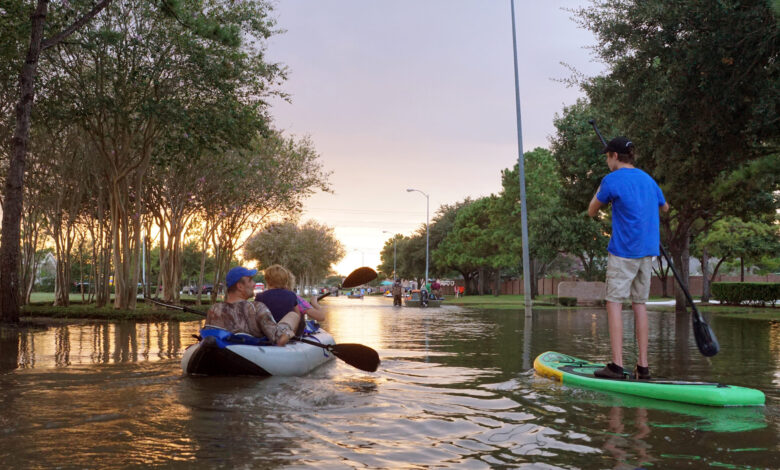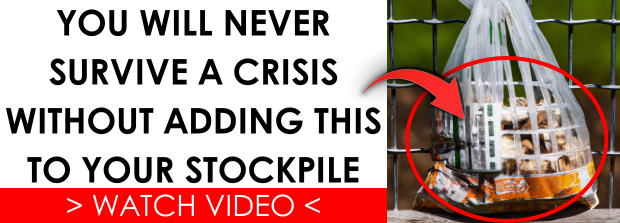Floods, Floods Everywhere – Survivopedia

Independence Day was very different for hundreds of families in central Texas this year. An area known as “The Hill Country,” and also by the more negative name “Texas Flood Alley.” While Flood Alley actually extends beyond the area affected on July 4th, the part of the Guadalupe River which was involved in this particular flood, the flood definitely proved that monicker to be true. As of this writing, there are 129 confirmed dead, with about another 170 people still missing.
But that’s not the whole story. There have been many tales of heroism coming out of that flood, including a dog who rescued a three-year-old he didn’t even know, and the owner of Mystic Camp, the one that’s really being in the news, giving his life, trying to rescue as many of the girls as he could. As I understand it, he succeeded in rescuing nine before the raging waters swept him away.

One would think that’s enough; but in the week following that deadly flood, there were almost 400 other floods that impacted communities in the United States. Probably the next most serious was in the town of Ruidoso, New Mexico; but there was also serious flooding in North Caroline, where they saw rivers rise as much as 45 feet, thanks to the remnants of Tropical Storm Chante.
One can speculate as to why we’re seeing so much flooding right now; and you’ll hear people give their pronouncements on everything from the Biblical End of the World to Climate Change. But the truth is, nobody knows why there is so much rain in all of these areas, at about the same time, while other parts of the country battle severe drought. All any of us can do is deal with the aftermath of these disasters, helping in recovery operations and reaching out to the families affected.
A Huge Impact
As with any disaster, floods impact many lives, often for the worst. Nature has such a huge amount of power available to her; and from time to time, that power in unleashed in truly devastating ways. I’ve never personally lived through flooding of this type, but I have lived through hurricanes. Each is unique in its own right; but they are common in that they show us just how puny we mortals are, in light of nature’s power.
Maybe these events aren’t big enough for us to refer to them as TEOTWAWKI events; but I’ll guarantee you that it was the end of the world that a lot of people knew… and I’m not just talking about those who died. In many ways, the flood was easier for them, because their fight was over, however it ended. The fight was only beginning for those who survive; especially those whose homes were destroyed by the floods.
It doesn’t matter if we’re talking about floods, hurricanes, tornadoes, wildfires, or earthquakes, the impact of these major disasters is the same. For those who are caught in the path of nature, their life, as they have known it, has ended, and their new life is all about figuring out how to survive; how to rebuild; how to keep going on.
For me, personally, every one of these disasters presents an opportunity to learn. I am in the habit of doing an after-action review of the incident, covering what happened, how people reacted to it, how the government responded, and just how much damage occurred. My goal in all this, is to see what I can learn from the situation, both for my own benefit and to share with others.
Being Forewarned is Always Better
One of the things that made this particular flood so devastating was the lack of adequate warning. That’s not to say that the appropriate agencies didn’t do their job. They did. I’ve reviewed the reports of storm tracking and warnings that were issued. It is clear that all appropriate measures were taken. Unfortunately, in this case, those measures were not adequate. First, the flood came during the night, when people were asleep; making it all but impossible for most people to hear. Secondly, there was no system of warning sirens in the affected area, which could have awakened people and let them know a flood was coming. Such a system had been proposed; but voted down.
With that being the case, the only people who could have been advised were insomniacs who happened to catch a notification on radio or television, and those who had weather radios. For most of the people in the affected area, this flood was a total surprise.
Part of the reason for the surprise was the rainfall which caused this flooding came from the remains of a tropical storm, which made landfall around the city of VeraCruz, Mexico. It had moved northward and reached a point upstream of the flood zone from the southwest, as if it were sneaking up on people.
Another part of the finger-pointing that has gone on has been directed at the camp owners along the Guadalupe River, especially the owner of Camp Mystic, the focus of media attention. That’s the same man I mentioned earlier, who gave his life rescuing the girls who were at his camp. FEMA had reduced the flood danger level for the land his camp was built on; so just who is at fault?
For you and I, as preppers, the issue isn’t who’s at fault; but rather, how to we keep from becoming victims. Looking at this event, I see a clear reminder that we can’t count on others to warn us; we must look at the raw data itself and draw our own conclusions. In this particular case, all the necessary information was available online to see the risk of a potential flood, even if that information wouldn’t have shown us the severity of that flooding.
With an eminent risk for flooding, the logical thing to do would be to avoid being anywhere near that river. If vacation plans included being near that river, it would be imperative that we keep ourselves up to date on any emergency information.
Always Have an Escape Plan
Something that this disaster has made clear to me, which others haven’t shown quite so much, is the need to always have an actionable escape plan in place. We all have bug out plans for leaving our homes in the event of a disaster; but what about when we leave home? Do we have a bug out plan for the hotel we’re staying in or in this case, the campground where we’ve pitched our tent?
Just having an escape plan isn’t enough. We also need to have whatever it would take to put that escape plan into effect. For years, I’ve traveled with a fully-packed and checked bug out bag in the trunk of my vehicle. I’ve never needed to use that to bug out; but there have been plenty of times where I’ve needed one thing or another, packed away in that kit, to take care of some problem or other.
In this particular case, an effective escape plan might have to include riding the river downstream, until we find a place to escape its current. I doubt that many, if any, of the people camping along the Guadalupe River were prepared to do that. Perhaps a few of the people living there might have boats; but most would not. Even then, having a boat doesn’t ensure that one would be safe; but it would be better than not having that option.

I live in a hurricane zone and have lived in one for over 20 years, both in the house I now occupy and the previous ones. During almost all that time, I’ve lived far enough away from shore that I was safe from storm surge. But that’s not the same as saying I was far enough away to be safe from flooding. With relatively flat land, it doesn’t take a lot of rain to cause flooding, even without the effect of a river running down a valley or gorge. Even so, it took the flooding of Houston by Hurricane Harvey for me to realize that I needed a boat… or at least a rubber raft. I quickly acquired one, just in case.
I also maintain an old Toyota 4-Runner as my bug out vehicle. It’s a bit rough around the edges, but I can count on it to get me around in high water, even if it can’t ford 30 feet of flooding. I not only have to concern myself with hurricane caused flooding at my own home; but those of my mother-in-law and brother-in-law as well. They both live about 30 miles closer to the shore than I do.
The last hurricane we had, I spent the day traveling from one home to the other, making sure that everyone’s homes were good. That 4-Runner, with its oversized tires and standard transmission was the perfect vehicle for that task. I could easily go through 16” of water, without getting wet. While we didn’t have that much water that time, it was nice to know that I could.
Read the full article here








